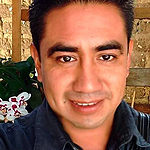Upper Bladen River, Belize. Submerged wooded stream bank area
10th place in Biotope Aquarium Design Contest 2018
![]() United Kingdom. Lee Nuttall
United Kingdom. Lee Nuttall

Volume: 540 L
Dimensions: 150x60x60 cm
List of fishes: Cryptoheros spilurus, Thorichthys meeki, Poecilia mexicana, Xiphophorus hellerii
List of plants: N/A
Description of decorations: Substrate is sand with a scattering of beech tree leaves and twigs. Some small river boulders and locally collected beech and oak tree wood and branches.
Description of equipment: EHEIM classic 600 with both biological and mechanical filtration, 1 x Arcadia T8 38W freshwater lamp, EHEIM thermocontrol 250 heater.
Water parameters: Temperature is 27°C, 80.6F, pH is 7.5, Ammonia is 0 ppm, Nitrite is 0 ppm, Nitrate is 20 ppm, GH is 18.
INFORMATION ABOUT BIOTOPE
Description of the area surrounding the biotope: Bladen Nature Reserve is located in the Central American country of Belize, a country consisting of 8,867 sq. miles (22,966 sq. kilometers) of tropical forest, savannah, mangrove, and wetlands. Bladen Nature Reserve is located in Toledo District in Southern Belize. The reserve gets its name from the Bladen Branch of the Monkey River which runs north-easterly through the area. This system lies along the south-eastern flank of the Maya Mountains and contains three branches (including the Trio and the Swasey) making it the fourth largest river basin in Belize. The river is lined with undisturbed primary broad leaved forest.
Description of the underwater landscape of the biotope: Due to the large area of Bladen River, the underwater biotope is reported to quite diverse as there are many different water habitats such as riffles, runs, deep pools, vegetated areas and adjacent streams. The river substrate are reported to be largely comprised of a mixture of cobble, rocks, sand and muddy silt. Lots of leaf litter and submerged wood and branches can be present, especially where trees overhang the river. The biotope represents an area around the shoreline/river bank with lots of submerged dead wood and snags.
Description of the parameters of the habitat: Water parameters were unavailable, however, it is mentioned that the phosphorus levels plays an important role in fish species diversity and aquatic plant life. Bladen River contains low levels of phosphorus which in turn controls plant life as a result little plant life is found throughout Bladen River. The Trio branch of the river is phosphorus rich, therefore contains much more aquatic plant life and fish density. Underwater videos show a blue tinge to the water with transparency levels from 4 meters.
List of fishes and invertebrates occurring in the nature biotope: Cichlid species: Cribroheros robertsoni, Cryptoheros spilurus, Petenia splendida, Trichromis salvini, Thorichthys meeki, Vieja maculicauda. Non cichlid species: (migratory) Agonostomus monticola, Astyanax aeneaus, Astyanax bimaculatus, Awaous banana, Gobiomorus dormitor, Heterandria bimaculata, Rhamdia guatemalensis, Poecilia Mexicana, Xiphophorus hellerii. Invertabrates: Pachycheilus largillierti, Pachycheilus corvinus, and Melanoides tuberculatus.
List of plants found in the nature biotope: Aquatic plant life is low, however, Myriophyllum, Vallisneria and emerged Echinodorus sp. is present in some habitats.
Threats to the ecology: Bladen’s status as an IUCN category 1a nature reserve which means that it is afforded the highest level of protection possible to a protected area. Bladen reserve can face many potential threats to its ecosystem such as the expansion of agricultural areas, hunting, illegal extraction and development ventures. There is also the potential of runoffs from fruit farming plantations. In 2009 Bladen was illegally entered by a hydroelectric company who were conducting a feasibility study for a potential hydroelectric dam on the Central River which forms the boundary between Bladen and Columbia River Forest Reserve.
Sources of information:
DIET, HABITAT, AND ECOMORPHOLOGY OF CICHLIDS IN THE UPPER BLADEN RIVER, BELIZE JENNIFER L. COCHRAN
Bladen Nature Reserve Management Plan 2007 – 2012
Comments of the members of the jury of Biotope Aquarium Design Contest 2018

I like Middle American biotopes designed with this style. A lot of driftwood and branches. I like this layout; I just would like the background with different colour. Fishes seem pretty healthy. Your video and photos are pretty good. Information about habitat is detailed. Good job, congrats.
Very interesting when analysed with another tank from the “series” (Upper Bladen River, Belize (overhanging tree branches shoreline habitat area 2). Both show that fragments of the same river can look totally different; it would be even more interesting to make a whole exhibition like this – several tanks representing the same water body, but showing different fragments. Again – some fishes breathe too fast, with reason unknown.

It is a very beautiful aquarium, containing wood and rocks with the appearance that can be observed in the nature biotope. However, as a comment and suggestion to achieve even more natural effect that is sought in the biotope aquarium: in the deep zones of the rivers that I visited at the border of Mexico with Belize and Guatemala, there is a greater predominance of rocks covering the bottom with the presence of detritus (although not as much as on the banks). And except for large trunks, small branches are usually moved to the margins by the current. In general it is a beautiful design. Congratulations!

This biotope scored highly in all viability categories. To the uninitiated, the interactions between these semi-aggressive Central American cichlids may appear violent! In reality, this is natural agonistic display behaviour and doesn’t result in any injuries. Their rough-and-tumble confrontations are in fact a sign of vigorous health and breeding condition. This is a testament to a healthy ecosystem with plenty of line-of-sight barriers and hidings spots to break up the territorial displays, foraging areas, and rest zones. Appropriate sandy substrate, organic debris, and algal growth on the rocks trigger their natural feeding behaviour, with the livebearers darting in to pick at any areas being stirred up by the cichlids.
